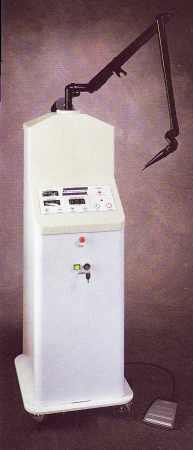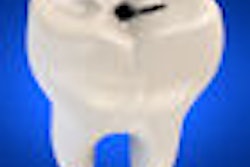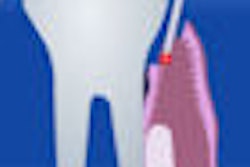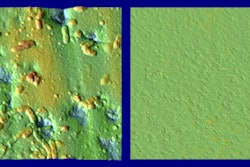
Imagine waving a wand and -- poof! -- your patients' teeth are protected from caries. It sounds like a page out of Harry Potter, but the fantasy took a step closer to reality this week.
In the first-ever experiment using carbon dioxide lasers to pre-treat living teeth, researchers from the University of California, San Francisco (UCSF) say they achieved an 87 percent reduction in tooth decay. "It looks like an exciting technology with a promising future," John Featherstone, Ph.D., dean of the university's dental school, told DrBicuspid.com.
Presenting their results at Photonics West, an annual conference hosted by SPIE-the International Society for Optical Engineering, the UCSF researchers showed results from a controlled clinical trial in 24 patients.
The idea of using lasers to prevent caries has been kicking around since 1972, and the results have looked good. But so far most of the experiments have been in vitro. Few investigators have tried treating teeth in a patient's mouth.
 |
| This LPS-500 Pulsed CO2 Laser, used by University of California, San Francisco researchers, has an aim beam output of 4.5 mW and wavelength of 9-11 mm. (Image courtesy of Pulse Systems) |
For the UCSF trial, the researchers focused carbon dioxide lasers at a wavelength of 9.6 micrometers on some surfaces of two teeth slated for extraction in each patient. They left other surfaces untreated. The investigators used orthodontic patients for the experiment because tooth decay -- in the form of white spot lesions -- is so common around braces.
After four weeks, they extracted half the teeth and sliced them so that the exact amount of mineral loss could be measured. They found 46 percent less mineral loss in the treated surfaces than in the untreated surfaces. After twelve weeks, they extracted the remaining half of the teeth and performed the same analysis. This time they found an 87 percent reduction in mineral loss in the treated teeth.
Dr. Featherstone believes the laser works by decomposing the carbonate ions in the carbonated hydroxyapatite of enamel. Carbon dissolves in acid much more easily than the other components of enamel. As the laser decomposes the carbonate ions, it also melts other components of hydroxyapatite into the gaps left by the carbonate ions. The resulting enamel is much more resistant to acid.
So should dentists begin zapping all their patients' teeth?
Not yet, says Dr. Featherstone. In the first place, there are questions about which laser works best. The carbon dioxide laser used in this study isn't commercially available. Custom built by Pulse Systems of New Mexico with multiple settings, it operates in the infrared spectrum. Most dental lasers operate in the ultraviolet spectrum and don't alter the carbon profile of enamel.
One lingering mystery about the process is that lasers operating at other frequencies have also shown the ability to prevent caries. "There's some promise in this area, particularly with argon lasers, which are the ones I'm familiar with," Gary H. Westerman, D.D.S., M.S., a professor of dentistry at Creighton University, told DrBicuspid.com. Dr. Westerman holds a patent for preventing tooth decay with a laser using wavelengths between 400 and 800 nanometers.
Many researchers have used lasers in combination with fluoride pastes or gels and calcium solutions. (The patients in the UCSF experiment brushed with fluoride toothpaste.) The research shows these lasers enhance the uptake of fluoride, says Dr. Westerman. "The laser doesn't generate much heat, but it does facilitate the conversion of freestanding calcium and fluoride into calcium fluoride," he says. "That in itself is a stronger tooth structure."
But Dr. Westerman adds, "there seems to be a significant improvement with the laser alone." He couldn't account for this independent benefit, though he speculated that there could be a "cleaning" effect.
If lasers for caries prevention become widely available, dentists will most likely use them on the surfaces most vulnerable to caries, such as fissures. Treating the entire tooth would be time-consuming and unnecessary since smooth surfaces are much less vulnerable to caries. And if the entire tooth were treated, Dr. Featherstone worries that the heat could damage the pulp.
The treatment might serve a purpose similar to that of sealants. "It could be used instead of sealants or in addition," says Dr. Featherstone. "As far as we can see, the treatment will be permanent, so that may be an advantage over sealants. Sealants last a long time, but they can leak or peel off if they are not well applied."
In a related experiment, Dr. Featherstone's team presented data showing that the carbon dioxide lasing doesn't protect dentin from the effects of acid. The problem is that dentin contains protein that the laser damages.
Dr. Westerman, however, says the argon laser treatment seems to have benefits for dentin and cementum as well as enamel. He envisions using the laser wherever white spot lesions form and says it might even work interproximally because the laser can be focused through enamel.



















